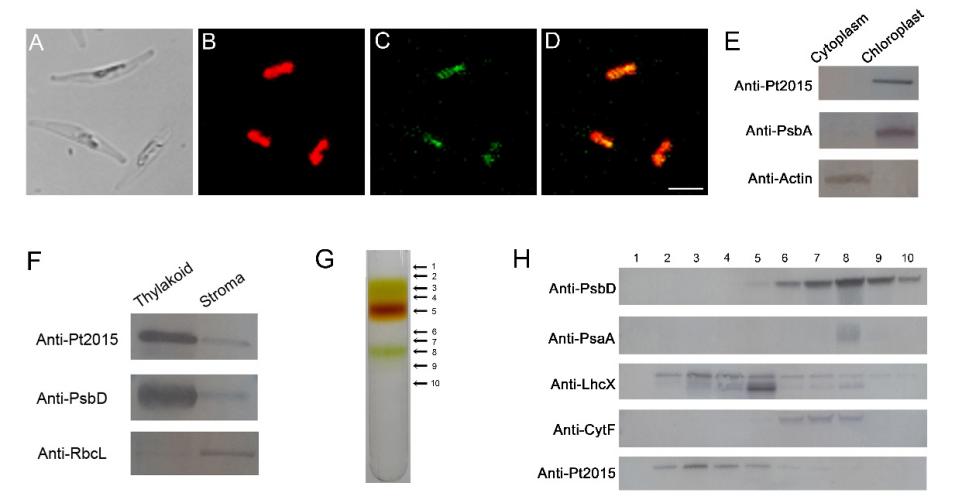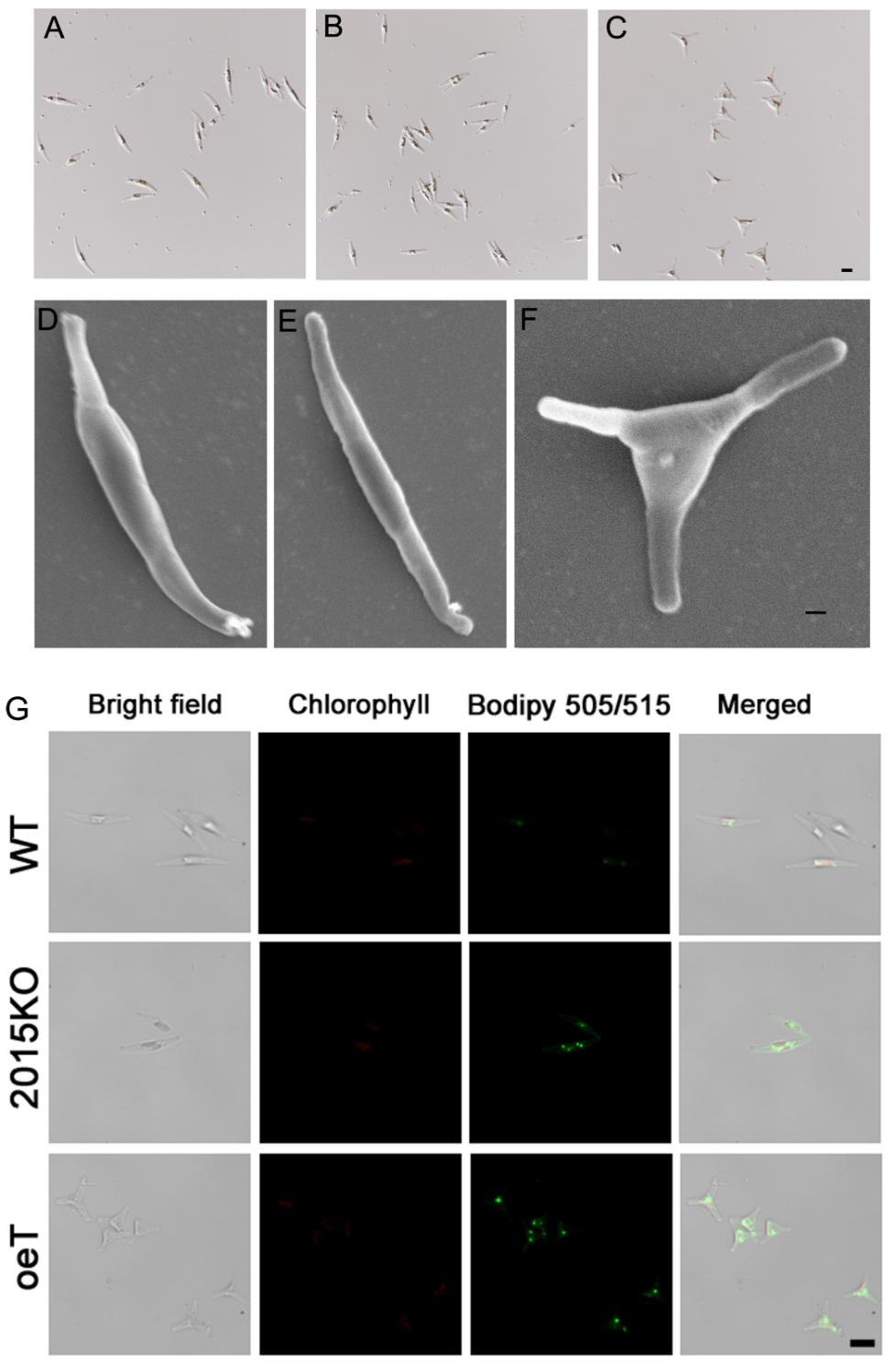Phaeodactylum tricornutum is a commercially important species that is widely used in aquaculture, and has potential to be a useful biofuel. However, contamination of algivorous microzooplankton has been one of the main constraints in P. tricornutum large-scale cultivation. Therefore, isolating a new strain with grazing resistance represents an important strategy for overcoming zooplankton contamination.
Recently, the research team led by Prof. WANG Guangce from the Institute of Oceanology of the Chinese Academy of Sciences (IOCAS) reported that overexpression of a novel gene endows the commercial diatom P. tricornutum high lipid content and grazing resistance.
The study was published in Biotechnology for Biofuels and Bioproducts on Nov. 26.
After several years of efforts, the research team found a novel gene (ID: 7202015, hereafter called Pt2015) in P. tricornutum. Researchers used CRISPR/Cas9 gene editing technology to knock out Pt2015, and found that there was no significant difference between Pt2015KO (Pt2015 knockout line) and wild type in cell morphology and growth. They found that overexpression of Pt2015 can lead to the transformation of cell morphology of P. tricornutum from fusiform morphotype to triradiate morphotype with special spatial structure, indicating that Pt2015 protein is a positive trigger factor for the transformation of cell fusiform to triradiate of P. tricornutum.
They also found that the economic characteristics of the triradiate strain caused by overexpression of Pt2015 were extremely stable. The triradiate strain demonstrated a three-dimensional three radial pattern, and had obvious resistance to the algivorous microzooplankton (amoeba) (increased by 2 times).
"Moreover, the total lipid content in triradiate strain cells is about 30% higher than that of the wild type, and the growth rate was no different from that of the wild type," said GAO Shan, first author of the study.
"The triradiate strain not only improves our understanding of morphotype conversion in diatoms, but also demonstrates potential applications for large-scale cultivation of P. tricornutum," said Prof. WANG.
This study was supported by the National Natural Science Foundation of China, etc.

Fig. 1 Subcellular localization of Pt2015.

Fig. 2 Micrographs of the WT (A), 2015KO (B), and oeT (C) strains and scanning electron microscopy (SEM) micrographs of the WT (D), 2015KO (E), and oeT (F) strains. Localization of lipid bodies in the WT, 2015KO, and oeT strains after staining with BODIPY 505/515.
Gao Shan#, Zhou Lu#, Yang Wenting, Wang Lijun, Liu Xuehua, Gong Yingchun, Hu Qiang and Wang Guangce*. (2022). Overexpression of a novel gene (Pt2015) endows the commercial diatom Phaeodactylum tricornutum high lipid content and grazing resistance. Biotechnology for Biofuels and Bioproducts, 15:131, 1-19.
(Text by GAO Shan)
Media Contact:
ZHANG Yiyi
Institute of Oceanology
E-mail: zhangyiyi@qdio.ac.cn
(Editor: ZHANG Yiyi)

